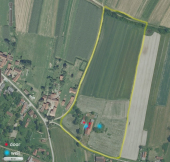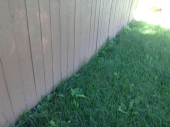
 3
3








 3
3




Pecan Media: food forestry and forest garden ebooks
Now available: The Native Persimmon (centennial edition)
 1
1




 2
2




 1
1




Patience with my ignorance is required as this new to Growies old lady tries to build a food forest in the arid high desert. Thank you for all the advice. 
 2
2




~The truth is always loving.~




Patience with my ignorance is required as this new to Growies old lady tries to build a food forest in the arid high desert. Thank you for all the advice. 
 1
1




Linda Ford wrote:
We are getting the rains now and the "weeds" are going great guns. I haven't posted pictures but now it looks quite lush while a month ago it resembled the Serengeti. Perhaps i can figure out how to get a goolge earth pic to post of the before.
Happy Monsoons!
 1
1




![Filename: arizona-summer-2013-304.jpg
Description: [Thumbnail for arizona-summer-2013-304.jpg]](/t/37031/a/24217/arizona-summer-2013-304.jpg)
 1
1








Zone 6 Ohio




 1
1




![Filename: 1420048274562.jpg
Description: [Thumbnail for 1420048274562.jpg]](/t/37031/a/24229/1420048274562.jpg)





Zone 6 Ohio












Today I will do what others won't, so tomorrow I can do what others can't.








kevin stewart wrote:
I was wondering about making alcohol from cactus pads but the cows ate them all.
 Can use the leaves to make cordage, too. Save any prickly pear that survives for eating! Slice it into strips, dip it in lime juice and sprinkle with a little bit of salt, then grill and add to tacos or fajitas.
Can use the leaves to make cordage, too. Save any prickly pear that survives for eating! Slice it into strips, dip it in lime juice and sprinkle with a little bit of salt, then grill and add to tacos or fajitas.  Don't boil it. It gets really slimy like okra when you do that.
Don't boil it. It gets really slimy like okra when you do that.
Today I will do what others won't, so tomorrow I can do what others can't.




Helen Gilson wrote:Patricia, you are living our dream! Please keep us posted on every little thing you are willing to share! I am taking notes! I wish more people would post pictures of themselves too. For instance is the guy digging his own by hand is he a 20 something muscle bound kid or a 50 to 60 yr old determined to make it work? We want to do what you are doing now for our retirement. What can we start collecting now to bring with us from the Midwest into the southwest? What should we plan to leave behind because we won't need it there?
Again, love you posts! Thank you so much for sharing your adventure!
Today I will do what others won't, so tomorrow I can do what others can't.




 1
1

















Zone 6 Ohio













|
The time is always right to do what is right. -Martin Luther King Jr. / tiny ad
permaculture and gardener gifts (stocking stuffers?)
https://permies.com/wiki/permaculture-gifts-stocking-stuffers
|





